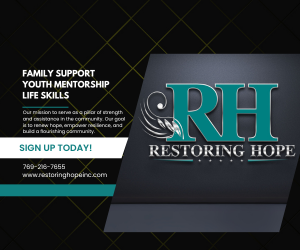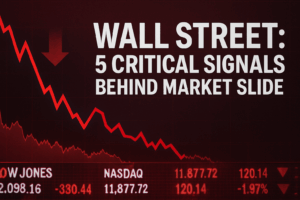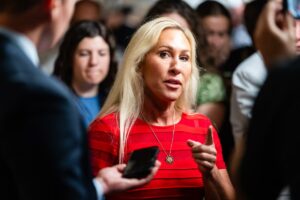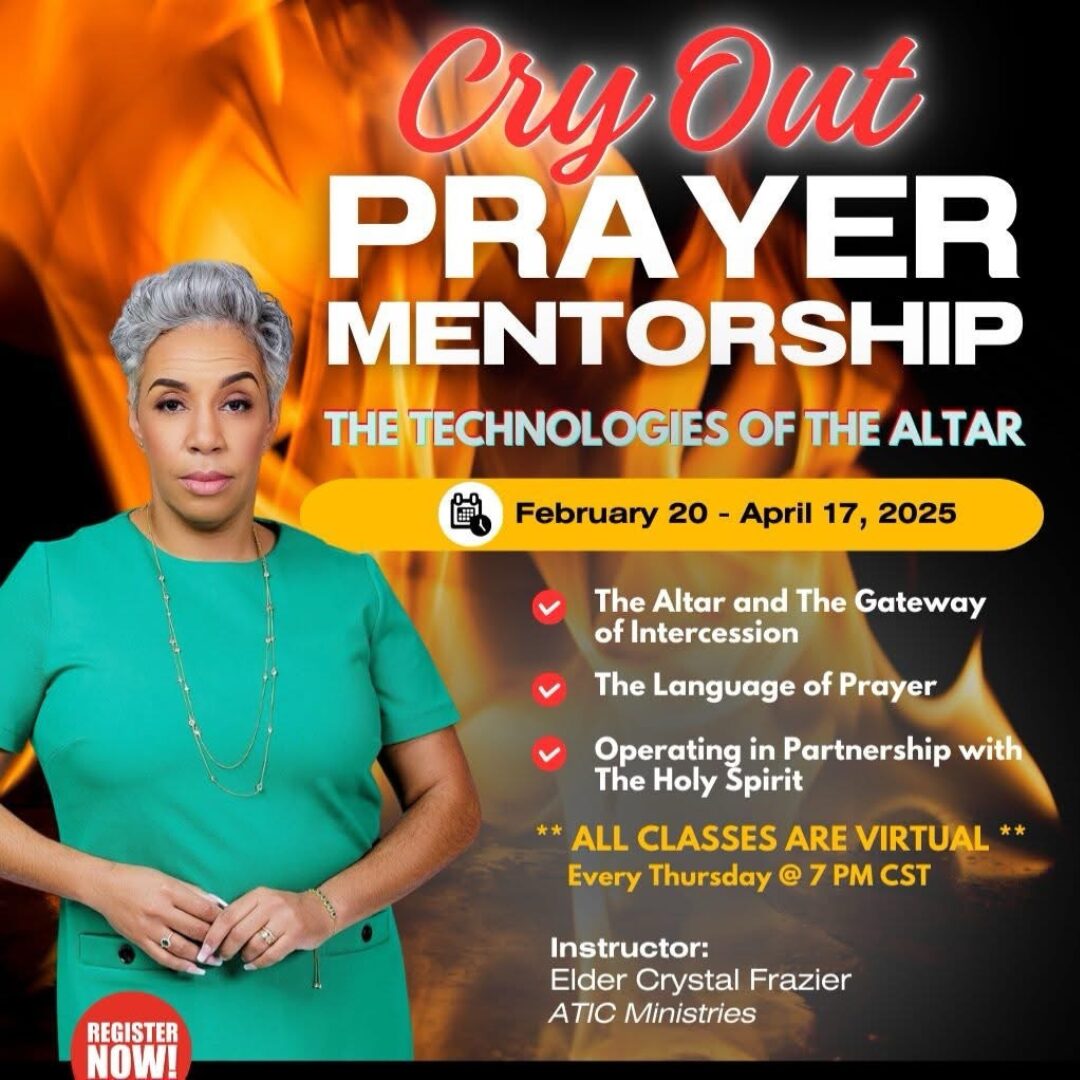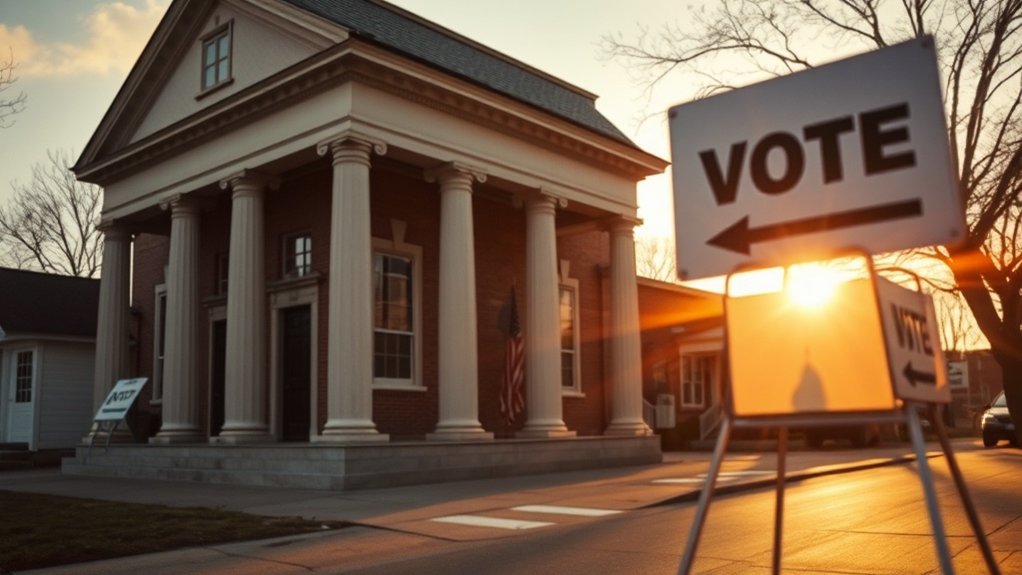Major Takeaways:
Climate change is intensifying hurricanes by fueling higher rainfall, stronger winds, and more devastating storm surges.
Rising sea levels and vulnerable coastal development increase both human and financial risks.
Solutions include stricter building codes, climate adaptation, and preparedness, though inequities in recovery remain a major challenge.
Hurricanes Grow Stronger as Climate Change and Rising Seas Fuel Greater Destruction
This week on Viewpoints. There’s been consistently more hurricane damage over the last ten years than there was, for instance, in the 30 years leading up to it. What’s making hurricanes more intense and destructive? Then… Emotions are complicated.
They play out in ways that we can’t always predict or control, and they’re messy and inconvenient. You fell in love, got married, and thought the hard part was over. Why maintaining a healthy marriage is a lifelong journey.
I’m Marty Peterson. And I’m Gary Price. These stories in-depth this week on your public affairs magazine, Viewpoints.
At Skechers, comfort is a technology. That’s right, it doesn’t just happen. You don’t just make a shoe and hope it comes out comfortable.
It takes research, innovations, compounds, engineering, and so many of the boring things we don’t really want to get into. Because it gives us time to talk about the exciting stuff, your comfort. You see, Skechers wants you to feel so comfortable, you swear you’re wearing pillows on your feet.
So we have features like Skechers AirCool memory foam that molds to your foot and wraps it in luxury. And Skechers has fits like RelaxFit, StretchFit, WideFit, ArchFit, and so many more. All comfort technologies that make the shoe feel like it was custom made just for your foot.
Plus, we have hands-free Skechers Slip’N’S technology. And this, folks, is a game changer. This tech allows you to just step into your shoes and put them on.
You don’t have to bend down and struggle. You don’t even have to touch them. That’s ultimate convenience and comfort.
So you see, comfort is a technology. And nobody, and I mean nobody, does comfort like Skechers, the comfort technology company. Find yours at a Skechers store, Skechers.com, or wherever comfortable footwear is sold.
Last month marked 20 years since Hurricane Katrina devastated New Orleans and the Gulf Coast. Katrina was the costliest natural disaster in U.S. history and killed close to 1,400 people. Even today, residents are still recovering from its effects and understand that it could happen again.
Scientists are also concerned as climate change is creating stronger and more destructive hurricanes. We know that hurricanes are not necessarily becoming more frequent. That is, there aren’t necessarily more hurricanes out there.
But what hurricanes we do have and we are experiencing on the mainland here in the United States, and indeed across the rest of the world, are becoming more severe. What do I mean by that? Well, there’s a few different ways that the characteristics of hurricanes are changing in response to climate change. One of the ways is very simple.
It’s related to sea level rise. So we know that around the world, especially along the east and gulf coast of the United States, sea levels are starting to increase quite dramatically. And they’ve been increasing for the last 100 years.
What that means is that as these hurricanes come on shore, they’re bringing higher water levels with them, which can threaten infrastructure in a particular coastal region. That’s Daniel Guilford, a climate scientist at the nonprofit science news organization Climate Central. Another way that hurricane characteristics are becoming more severe is that we know that a warmer atmosphere is a wetter atmosphere.
So atmosphere is becoming more moist as we increase the atmospheric temperature due to human-caused climate change. There’s more moisture in the atmosphere, and that means that hurricanes can rain out more effectively. There’s more water coming out of hurricanes now.
And that is a real big problem because not only are we dealing with storm surge as a hurricane comes on land, but we can see intense, significant rainfall impacts due to these hurricanes. Storm surge can cause dangerous flooding and happens when there’s a quick rise in water levels during a hurricane and strong winds push the water inland. Additionally, hotter temperatures cause more evaporation.
And as hurricanes move across warm oceans, they pull in extra heat and water vapor, fueling stronger, more destructive storms. Coinciding with that, we see that there’s an increase in the amount of billion-dollar disasters that we have associated with hurricanes. There’s been consistently more hurricane damage over the last 10 years than there was, for instance, in the 30 years leading up to it.
There’s just more and more damaging associated with these storms. Part of that is related to increased vulnerability, especially there’s more people living in vulnerable places now to these hurricane impacts. But part of that is also increases in hurricane destructiveness.
According to the last census, 94.7 million Americans live in coastline regions. This is nearly 30% of the overall U.S. population. Of that group, 60.2 million live along the Atlantic Ocean or the Gulf of Mexico, two areas that are the most vulnerable to hurricanes.
As these storms have intensified, there’s been some action taken to make structures stronger and more resilient. However, Jeff Slegamelt, director of the National Center for Disaster Preparedness at the Columbia Climate School at Columbia University, believes there’s still a long way to go. In Florida, after Hurricane Andrew in the 1990s, a number of codes were changed, sort of recognizing the vulnerability from that.
And some of it is more proactive, but so one of the first ones are building codes. How we build our homes, how we build our infrastructure, where we build it, if you’re going to build it in a hurricane-prone area, if you’re going to build in an area prone to storm surge, you have to have certain things in place, right? So the building codes require that by law. In a lot of other cases, we see codes maybe not being put in place, not being pushed forward, because it has this very real effect of making it more expensive in the near term, right? It costs more to build a home that will withstand a hurricane than to build one that won’t.
And so that creates some economic pressures that affect growth, that affect things like affordable housing. And if you’re in an environment that is on top of all that hostile to this notion of climate change, you can get a lot of pressures against putting in those types of regulations and things like that. Building codes vary across the country, but in hurricane-prone regions, they often require stronger materials for framing and roofing, enhanced foundation and structural requirements, and adherence to strict wind-resistant standards.
And while investing in resilience is expensive, it’s much cheaper to spend the money now rather than after the damage is done. Some estimates say spending $1 pre-disaster saves you $6 after, with some experts placing that number as high as $15. These measures can make a big difference, but in many places, they’re no longer enough.
Along coasts hit hard by sea-level rise, some experts are pushing a controversial strategy called managed retreat. There was actually a study that was looking really globally at the economics of either shoring up areas, making them more resilient to storms and sea-level rise and all these different hazards, and the other is to say pack it up and move it inland, right? And what that study found and what we find time and time again is that neither solution is actually economically viable. You have some areas that are so built up with so much infrastructure in the pathways, it’s actually better to shore them up, build flood walls and various types of infrastructure.
Others are just in such hazardous areas that it just is not economically viable to protect them. You have to move them. Managed retreat also overlooks the human cost of leaving.
For families who’ve lived in coastal areas for generations, being forced to move from the only place you’ve ever called home can be deeply traumatic. The one thing that we lose with all of this, though, is the human side. We have areas where families have lived for generations.
Some have very significant cultural ties and things like that. Those don’t get caught up in those economic analyses. So there are a lot of very innovative solutions that have to do with the built environment of things that we can do if we can afford them.
But there’s also a lot on the social environment in terms of keeping people together, keeping communities together, staying connected with where they’ve lived for generations that also has a value that we don’t necessarily take into account. One notable example of managed retreat is the Isle de Jean Charles in Louisiana, the island which was a historical homeland of a Native American tribe, was forced to relocate after years of rising sea levels and coastal erosion. After getting funding from the U.S. government, the community successfully resettled to a new isle 40 miles away.
While there have only been a few instances of these domestic relocations, that number will soon grow if climate change continues to worsen. There are areas everywhere, certainly in the U.S., along the Gulf Coast and low-lying areas of Louisiana. You have some communities that are at risk of disappearing as a result of this, and even major built-up areas like Miami and Florida are extraordinarily exposed.
So, what can we do? With climate change occurring on such a large scale, you may feel powerless when hurricanes and other natural disasters happen. And though we can’t control the timing or impact of these events, there are factors that are in our control. The short-term solution is to go to Ready.gov and prepare yourself by having you and your household prepared for the worst of hurricane disasters, if you are sort of in the range of where hurricanes could be.
Further inland communities now should be prepared. If you live along the eastern Gulf Coast for hurricane impacts, I think that’s critical. So, go to Ready.gov and prepare yourself.
The other thing is sort of a longer-term goal, which is that we need to continue to see this as an opportunity to talk about how our climate is changing and affecting our communities. We know these storms are now more severe because of human-caused climate change. We are increasing the temperature of our atmosphere and oceans, and that’s affecting these intense events and making them worse.
But we need to be having those conversations where we talk with people that we know, that we love, that we care about, about these impacts, so we can collectively, together, work towards solutions to making them less terrible for the communities that we care about. Looking ahead, while some communities will have the money and resources to adapt, others will be left behind. Unfortunately, what we’re seeing right now is a little bit of a reversal in the U.S., where we’re seeing a lot of those preparedness programs being cut or being eliminated, and so it’s going to be sort of the haves and the have-nots in terms of who can afford to be resilient, who can afford to put these preparedness mechanisms and the infrastructure in place.
There’s a saying that disasters don’t discriminate, and I can tell you the data shows time and time again that they absolutely do discriminate. You can have the same disaster hit the same city, and communities that are more socially isolated, more socioeconomically deprived, which correlates a lot of times with race, with gender, all sorts of things, based on historical policies, have extraordinarily different experiences in their capacity to cope, their ability to marshal resources and access resources after a disaster. So we can’t just look at the exposure to the hazard.
We have to look at the ability to recover from that, and that’s where we truly get an effective and lasting recovery. To find out more about Daniel Guilford, Jeff Segelmilch, and all our featured guests, visit ViewpointsRadio.org. For more behind-the-scenes, check out Viewpoints Radio on X, Facebook, and Instagram. This segment was written and produced by Grace Galanti.
Our executive producer is Amir Zaveri. Our studio manager is Jason Dickey. I’m Gary Price.
This segment is sponsored by Capital One. Banking with Capital One helps you keep more money in your wallet with no fees or minimums on checking accounts and no overdraft fees. What’s in your wallet? Terms apply.
See CapitalOne.com slash bank for details. Capital One N.A., member FDIC. Coming up, we speak with a psychologist and marital expert about why marriage feels so hard sometimes when Viewpoints returns.
Behold, the Colonel’s Giant KFC Chicken Sandwich, a towering, extra-crispy monument to flavor. Such a huge amount of juicy, hand-breaded KFC chicken at a pretty tiny $3.99 price for the Colonel’s KFC Chicken Sandwich. I mean, $3.99 isn’t even worthy of the same epic soundtrack as the KFC Chicken Sandwich for only $3.99. The Colonel lived so we could chicken.
Prices and participation vary while supplies last. Taxes, tips, and fees extra. If Old Spice Deep C Super Hydration Body Wash were music, what would it sound like? Start with the deep sounds of Old Spice’s ocean waves and kelp.
Layer on the smooth, renewing moisture. You wouldn’t hear any parabens or phthalates because Old Spice Deep C hasn’t got any. But you would hear that vitamin B3 for healthier-looking skin.
So while your regular body wash sounds like this, Old Spice sounds like this. Sounds like it smells amazing. If you love to travel, Capital One has a rewards credit card that’s perfect for you.
With the Capital One Venture X card, you earn unlimited double miles on everything you buy. Plus, you get premium benefits at a collection of luxury hotels when you book on Capital One Travel. And with Venture X, you get access to over 1,000 airport lounges worldwide.
Open up a world of travel possibilities with the Capital One Venture X card. What’s in your wallet? Terms apply. Lounge access is subject to change.
See CapitalOne.com for details. Exciting news, ladies. Always Discreet Boutique Bladder Leak Underwear are available in black and printed design.
Protect yourself with style. These fit and feel just like real underwear, and they give you up to zero leaks, zero odor. Designed for all shapes and sizes, they give you the confidence to be fully yourself.
Don’t let bladder leaks hold you back. Buy Always Discreet Boutique Bladder Leak Underwear now. It’s a part of the American dream, marriage.
From a young age, people are told what qualities to look for in a spouse and fantasize about their perfect wedding day. But what happens when all of those things are in the rearview mirror? At some point, the wedding cake is gone, the honeymoon period ends, and people are left to cultivate this marriage they’ve long dreamed about. Experts say that’s not always easy.
After generations of transformation, our current expectations for what a marriage should be are higher than ever before, and that can cause problems. We’re now at a moment where the expectation and the aspiration of intimate relationships is that they be emotionally close, that they include trust and understanding and intimacy, and they include, essentially, all the things that people want from close relationships, and that obviously engages people’s emotions, and emotions are complicated, and they are formed in our early lives, they play out in ways that we can’t always predict or control, and they’re messy and inconvenient. That’s Dr. Daphne DeMarniff, a clinical psychologist and author of the book The Rough Patch, Marriage and the Art of Living Together.
The rough patch is sort of an umbrella term, in a sense, that I came up with to sort of talk about, in general terms, a kind of moment of life, a moment in the developmental life course of marriage and of individuals, and that moment, as I’m identifying it, is this time when people have sort of made their basic life decisions, built a life together, they have the kids and the job and so forth, but they feel they’re kind of hitting a certain kind of wall about, is this all I want? Is this marriage working? It’s sort of existential. Who am I? What am I? What do I want? Is this enough kind of moment? DeMarniff says people can react to a rough patch in many ways. They may become withdrawn or apathetic.
Some may even resort to abusing drugs and alcohol, while others may go on a reckless spending spree. Of course, those behaviors will likely just make the rough patch worsen. DeMarniff says there are healthy ways to examine a relationship and work through a tough time.
The beauty of an intimate relationship is that you can depend on this person and get really important emotional needs met through them, but the risk or the danger is that you believe that if you don’t feel that you’re getting certain things from that person, that the problem is the marriage or the other person. And I think that marriage in general, intimate relationships in general, are hugely vulnerable to blame and projection and seeing the other person as your problem, because it’s in the nature of human anxiety that when you’re feeling like you’re struggling and need help and you don’t feel you’re getting it, that you get upset with the person who you feel isn’t providing it. So my main thrust in how I talk to people is that you have to be able to look within and to cultivate your own self-awareness about your own emotions and try to figure out how to know your emotions and express them skillfully.
Especially in times of great change, becoming an empty nester, changing jobs, moving cities, or even biological change, DeMarniff says it’s important for people to take stock of their own selves. I talked to one woman who said, you know, when she went through menopause, she just sort of felt depressed and she felt bad about herself and she felt kind of like she didn’t want to do anything, and she just kind of forced herself to take up some new interest. What I liked about that was she wasn’t turning to her partner and acting like he was the problem.
She saw that she was going through something developmental. She was going through a challenge in her own course of her own life that she realized she needed to take care of, and that is hugely helpful to relationships when people can take responsibility in a sense for their own unhappiness and dissatisfaction and say, what do I need that I’m not getting in my life? Not you, but in my life. In her experience, DeMarniff says she’s learned that a big issue for many couples is communication.
She says couples may have arguments via text message or allow themselves to say angry, hurtful things. She says these things will always be worked out better in person and without tempers flaring. Share your feelings, but try to lead with soft emotions because especially when people have their first children, when they have children, there’s a statistic that suggests that marital satisfaction pretty much always goes down, at least temporarily, when people have children.
And it’s a real vulnerable time in terms of people feeling they need a lot from each other in terms of support and dependency, but also feeling through fatigue and stress and so forth easily frustrated by each other. And so they can get kind of irritable and frustrated and not as positive as they might be. And so at the moments like that, which are vulnerable to that, to always try to move toward how can I express what I’m feeling on the more vulnerable end of the spectrum, like it makes me sad or it makes me lonely or it makes me scared when I don’t feel like you’re as dependable as I need you to be or whatever.
Because people can often start developing a critical story about their spouse. Everyone wants to have an idyllic marriage, one that just works on its own and never lets you down. DeMarniff says that’s not realistic and that like anything else in life, to reap all of the benefits of a healthy marriage, you have to be willing to do the work.
We also live in a culture where it’s kind of admirable to work 60 hours a week, but certainly not admirable to spend any more time managing your relationship than needed. I mean, we don’t have a very realistic sense of what it takes, the time it takes, the effort it takes to hash out difficult emotions, and that’s going to be part of the picture of marriage. To find out more about this topic and our guest, Dr. Daphne DeMarniff, head to ViewpointsRadio.org. This segment originally aired in January 2019 and was written by producer Evan Rook.
Our executive producer is Amira Severi. Our studio manager is Jason Dickey. I’m Marty Peterson.
Viewpoints returns in just a moment. Do Crohn’s disease or ulcerative colitis symptoms keep coming back? Tremphaya, gaselkomab, may help, with rapid remission achieved at 12 weeks and lasting clinical remission at one year. Some even saw visible improvement of their intestinal lining at 12 weeks and one year.
Tremphaya is a prescription medicine used to treat adults with moderately to severely active Crohn’s disease and adults with moderately to severely active ulcerative colitis. Serious allergic reactions and increased risk of infections and liver problems may occur. Before treatment, your doctor should check you for infections and tuberculosis.
Tell your doctor if you have an infection, flu-like symptoms, or if you need a vaccine. Healing is possible with Tremphaya. Approximately 3 out of 10 patients were in endoscopic remission at one year.
Based on areas visualized on colonoscopy, which may not represent the deeper bowel layer or entire GI tract, individual results may vary. Ask your doctor about Tremphaya today. Call 1-800-526-7736 to learn more or visit TremphayaRadio.com. This is Viewpoints Explained.
I’m Ebony McMorris. For decades, billionaire Rupert Murdoch swayed public opinion through his vast media empire. Now at 94 years old, he’s announced he’s handing over the reins to his eldest son, Lachlan.
The family is worth around $24 billion in overseas Fox News, the New York Post, the Wall Street Journal, and several other media entities around the world. But go back to the 1950s, and this monolith was almost non-existent. It all started with a small newspaper in Australia that Rupert Murdoch inherited from his father.
He quickly made a name for himself as a bold risk-taker and by the 1960s was buying up small Australian papers and tabloids using eye-catching headlines and sensational stories to increase readership. Little by little, he expanded abroad with the purchase of UK print tabloids and then outlets in the U.S. Each move built on the last, creating a cross-continental network that gave him unmatched political influence and financial leverage. Today, as many media companies struggle to stay afloat, Fox Corporation has been able to set itself apart and stay profitable.
In the last fiscal year, it reported a record high revenue of more than $16 billion. So what’s next under this new leadership? Print tabloids, which were the core of the company, now losing money. Growth is mainly coming from sports broadcasting, subscriptions, and streaming.
Analysts expect the new CEO, Lachlan Murdoch, to focus on those areas and cut back on weaker outlets. Politically, though, little is expected to change at Fox News or the New York Post. Only time will tell if Lachlan has the vision and leadership to ensure the long-term stability of this massive media network.
That’s Viewpoints Explained for this week. More in a moment. Welcome to Culture Crash, where we examine what’s new and old in entertainment.
Twenty One Pilots released their first major label album in 2013 called Vessel. Immediately, the band made a name for themselves with a signature blend of electro-pop, hip-hop, and indie rock. Their influences include Linkin Park, Death Cab for Cutie, and My Chemical Romance, but also 311 and Modest Yahoo.
Twenty One Pilots have never been afraid to mix up their genres and create a sound that is very specifically theirs. After hitting a commercial peak and winning a Grammy with the 2015 album Blurryface that featured the hits Stressed Out and Ride, the band has mostly shied away from chasing chart positions and instead doubled and tripled down on their idiosyncratic drum-heavy spoken-word rock-rap fusion. Their latest album is called Breach and it finds them at the top of their game making music that could only be theirs.
The first song, City Walls, wraps up a 10-year narrative arc that has littered their music with an allegory for anxiety and depression by way of a protagonist named Clancy locked away in a city called Dima with a group of fellow rebels. The song works both as an achievement of storytelling for those interested in the band’s lore and as a genre-hopping extravaganza for listeners who know nothing about the long-running arc. Perhaps the best song on the album is Drum Show, a nu-metal adjacent showcase for drummer Josh Dunn that features a signature primal scream from frontman Tyler Joseph and a rip-roaring chorus that will please any emo music-loving millennial.
I’ve been this way. I want to change. Dunn and Joseph both sing on the track.
Another song, Downstairs, finally sees the band finish a 14-year-old demo that naturally sounds similar to the Vessel and Blurryface-era songs of the 2010s. A personal favorite of mine, One Way, is a breezy bit of ethereal music-making that’s perfect for driving down a highway with the windows down. For years now, 21 Pilots has maintained a small but mighty group of dedicated listeners by making their own brand of music.
Their new album, Breach, sounds like a band looking back on a decade and a half of music and rejoicing in the many ways they’ve found to give voice to their particular brand of anxious millennial emo rock-rap angst. With their years-long narrative completed and old demos polished up and released, what comes next for the duo from Columbus, Ohio remains an open question. But Breach is an unmitigated success.
I’m Evan Rook. When you bundle Renters and Auto with Progressive, you can save while protecting your most valuable possessions, like your really expensive limited-edition sneakers and your new suit for your cousin’s wedding. Except you never actually bought the suit because you can’t stop buying sneakers.
So you show up to the wedding looking like you’re going grocery shopping. But hey, at least your sneakers will look good in the pictures. Until you’re cropped out of every last one of them.
So go ahead and get Progressive, so you can save while protecting the things that matter to you. Progressive Casualty Insurance Company and affiliates and other insurers not available in all states or situations. It’s a classic odor tale.
You fried fish for dinner, cleaned up, but the smell is still in the house. And the neighbors are coming over for game night. They’re on their way.
And then you spray Febreze Air Mist. Febreze Air starts working instantly to fight even your toughest odors, so you go from fish to fresh like that. Now all you have to worry about is Pam cheating at charades.
Breathe happy Febreze, la la la la la. And that’s Viewpoints for this week. Follow us on Twitter, Facebook, and Instagram to learn more about upcoming shows.
And find a library of past programs on Apple Podcasts, Google Play, and Spotify. Plus, you’ll always find previous segments and more information about our guests at ViewpointsRadio.org. Join us again next week for another edition of Viewpoints.



